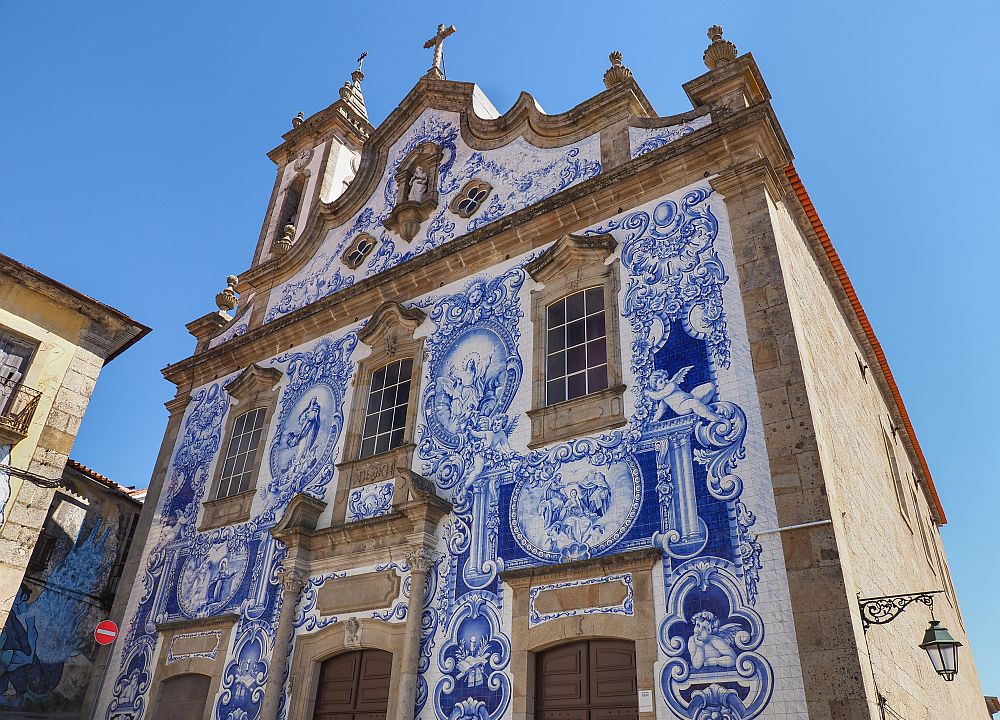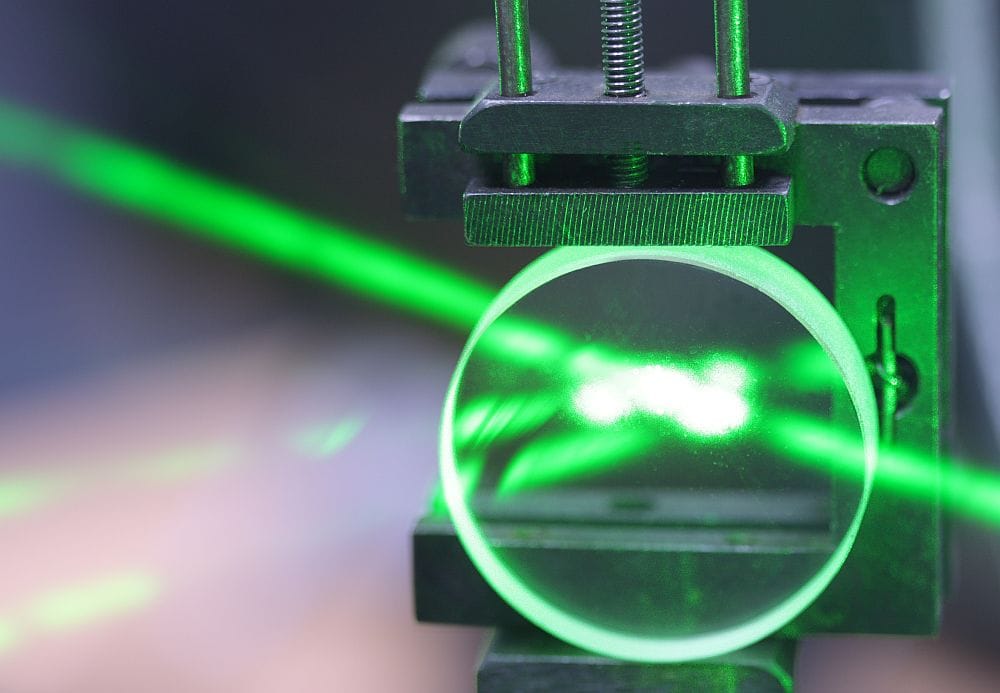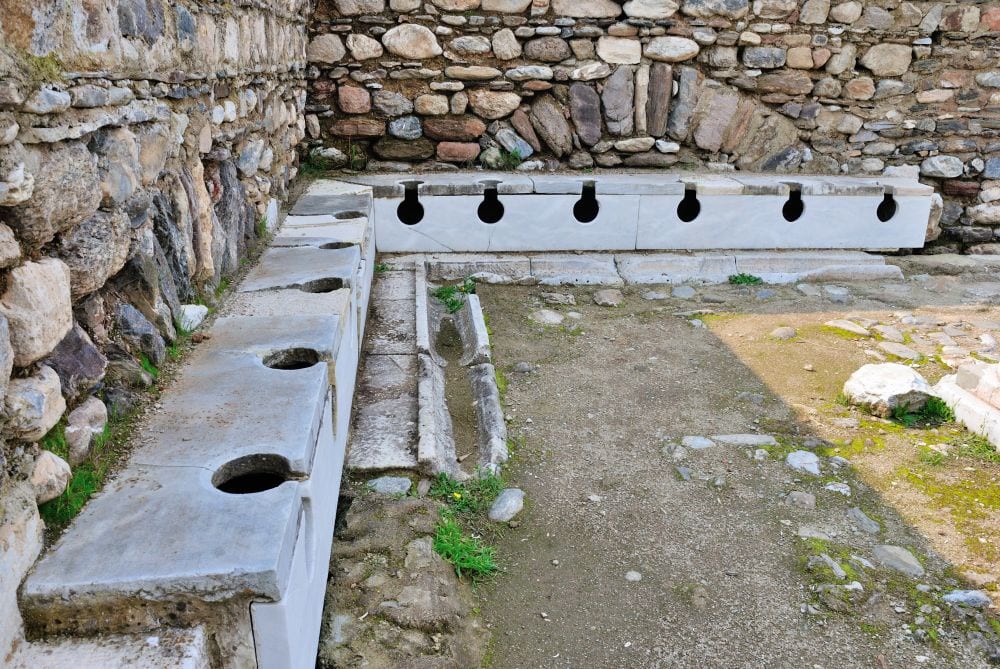
[Image above] The James Turrell–designed crystal bottles, Range Rider and Purple Sage, greet exhibit viewers at the entrance. Credit: Corning Museum of Glass
The olfactory nerves, which connect the nostrils to the brain, are the shortest in the human body. Perhaps this fact is why a specific scent can immediately evoke strong memories. The scent of mothballs instantly transports me back to my great-grandmother’s living room. For you, it could be the smell of pipe tobacco, the mix of old hay and wet cows, or chocolate chip cookies baking in the oven.
This inextricable link between scent and memory, which scientists call olfactory binding, has been central to human life since the beginning of our history. As hunter–gatherers, we learned that when fruit smelled off, it could make us sick. We soon recognized that animals could smell us coming. So, the hunters learned to stay downwind of their prey. Among hunter–gatherer populations today, the vocabularies of scent are much more robust than those of urban populations.
When we settled into permanent places, the pungent mixture of scents from animals in the commons, the communal toilets, and discarded waste made ready access to more pleasant olfactory environments a necessity. This period is when perfume entered human lives.
The Mesopotamians burned scented incense 4,000 years ago. (Fun fact: The first chemist in history may have been a female perfumer from Mesopotamia.) The subsequent invention of the domed glass alembic by Arabian distillers in the 9th or 10th century enabled something akin to mass production of distilled spirits and perfumes.
But increasing production cannot overcome the fact that scent is fleeting; it will fade if exposed to air or other diluting substances. So, scent-carrying materials must be stored carefully to extend their shelf life.
Glass is an ideal vessel to preserve scented matter. The inert chemical structure of glass means it will not react with the volatile compounds stored within it, thus preserving the scents of fragrance-carrying oils. In addition, colored glass can protect organic compounds from degradation by light.
The use of glass to store scent is a story that spans millennia. This history is now on display through Sensorium: Stories of Glass and Fragrance, a new exhibit at the Corning Museum of Glass.
The Corning Museum of Glass
The history of glass is curated by a few special museums around the globe. I was lucky enough to grow up very near to one. The Corning Museum of Glass was founded in 1951 by Corning Glass Works (now Corning Incorporated) to preserve and expand the world’s understanding of glass. Today, it possesses the world’s most comprehensive glass collection, highlighting the beauty, versatility, and strength of glass.
When I was young, the museum had just reopened after a devastating flood caused by the remnants of Hurricane Agnes in the summer of 1972. We visited several times over the following 10 years or so. The glassblowing demonstrations, the honeycomb-shaped fiberglass climbing structure, and the exhibits about the remarkable strength of tempered glass were some of my favorite childhood memories. (I might have been a nerd.)
When I got the press release about the Sensorium exhibit, I was so intrigued that I drove four hours each way from my home to Corning (and back) on Sept. 28, 2024, to see it. Really, I didn’t need much of an excuse to visit my old stomping grounds—I grew up in the valley formed by the confluence of the Chemung and Susquehanna rivers, about half an hour from Corning. I stopped in Muncy, Pa., to pick up my cousin, and we made a day of it. I am pleased to report that as an adult, the museum has lost none of its appeal (although the fiberglass climbing structure is gone).
Sensorium: Curating the history of scent
My impression of the Sensorium exhibit was that it elegantly told the story of the development of scent production, weaving together the chemical, technological, and economic considerations that went into scent making through history. The setting is meant to evoke a perfume boutique, and its soft lighting and rich colors do that well. Containers for fragrance, spice oils, snuff, and rosewater are the center of the exhibit. My cousin and I spent an enjoyable hour examining the chosen objects (and several more hours browsing the rest of the main galleries).
A few days after my visit, on October 3, I had the opportunity to speak with the exhibit curator, Julie Bellemare. I asked her some of the questions that occurred to me as I toured the exhibit.
For example, I asked about the choice of vessels for storing fragrance, scented oils, snuff, and rosewater—not all of which you would think of when someone mentions perfume. What was the impetus for placing these objects together? Julie explained that adding containers for snuff (powdered tobacco mixed with aromatic materials) and scented oils presented the opportunity to introduce Chinese, Indian, and various other Asian (or non-Western) influences. This choice gives the exhibit a more global reach. Although many people consider perfume to be a European product, scent is universal to the human experience.
In my wanderings through the rest of the museum’s collection (although I didn’t get to either the Studio or the Rakow Library), I noticed there were many other vessels for scented materials scattered throughout the galleries. So, I wanted to know how the objects in the Sensorium exhibit were chosen. Julie explained that she wanted to tell a global story, so she chose objects that were unique representatives of various glass-making regions. The exhibit’s goal was to highlight some unusual historical stories about the role of scent in human history. She also wanted to keep most of her choices to objects in the museum’s existing collection.
My last question to Julie was which object in the exhibit was her favorite, and her answer was immediate. She pointed to an image she had pinned on the wall behind her and said that the James Turrell–designed Lalique crystal bottles, Purple Sage and Range Rider, were her favorites. The relatively short timeline for organizing the exhibit (planning began in summer 2023, just over a year before the exhibit opened) meant that arranging loans of objects would be difficult, but the Lalique team were immediately supportive and loaned the two bottles.
Sensorium will be on display through Feb. 1, 2025. If you have the chance to visit, know that the City of Corning runs a free shuttle bus from the Corning Museum of Glass to the city’s other well-known museum, the Rockwell Museum of American Art. A combination ticket for admission to both museums can be purchased at either site.
Author
Becky Stewart
CTT Categories
- Art & Archaeology
- Education


